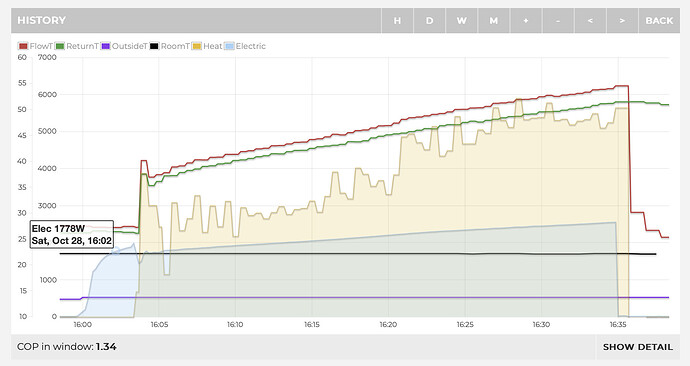Thanks, any input is useful.
I expect there are lots of us in similar positions. I’m not saying it’s a problem confined to Octopus but they have been installing a relatively large number of Daikin heat pumps.
The sad thing is, I would imagine that most owners are oblivious to what is going on.
I haven’t experienced sub zero temperatures yet but I have read that Daikin heat pumps are not as good at delivering the rated output at these sort of temperatures, but that is just what I have read.
If that is true, then I doubt my heat pump is over sized.
I don’t think my radiators are too small for the house as I have no trouble heating to 23c when it’s 7c outside at 30c flow temperatures.
I too struggle with pure weather compensation, the house gets too hot and the flow temperature is too low for the heat pump.
So far I can only conclude that the heat pump has a narrow window of operation in terms of efficiency and at the moment I can’t seem to get into that window.
Whatever I do has minimal effect on COP, I can’t destroy it with high flow temperatures and I can’t seem to do better than about 3.3 to 3.4 for heating.
It’s all a bit disappointing.
My trvs are all wide open, I see no value in restricting the heat pump by shutting down radiators.
My radiators are well sized for the rooms and the temperature in each room is in proportion to that designed even if I am running a little warmer overall.
I have Drayton trvs fitted.
I looked at fitting Danfos auto balancing trvs. I downloaded their app and tried to configure my radiators, those I have now and what I plan to change to. The minimum flow temperature I could choose was 40c but even at that it said that their valve was not capable of flowing enough water. That was for K3 radiators at 1200mmm x 600mm. It had no chance with my K3 500mm x 2200mm!
Whether they would actually work or not I don’t know. They are not expensive, about £30 each.
I have some plastic pipe but I can’t see any flow problems, my radiators are all roughly the same temperature and all seem to be flowing water with a difference between the flow and return of each one of 4c to 5c.
I should have my thermal imaging camera later and I will be able to check how they fill.
If I can eliminate any problems with my radiators I should be able to concentrate on getting the best out of the heat pump and/or working out what is wrong with it.
If my heat pump really does have such a narrow window of operation then I will start to feel like it has been mis-sold.


